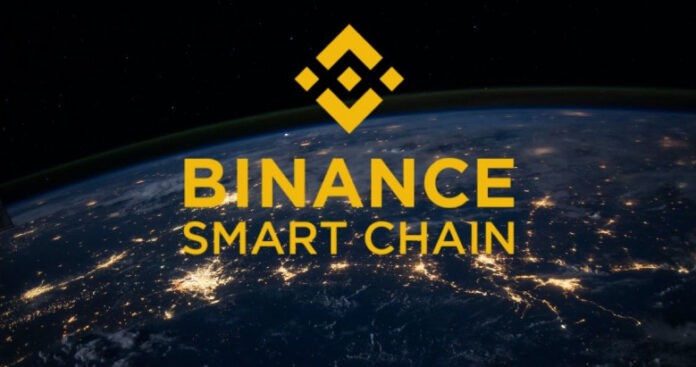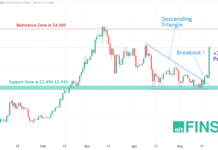Besides being a cheaper alternative to DeFi than Ethereum, the Binance Smart Chain also offers attractive returns on staking BNB to one of the validator nodes and thus participating in block validation.
Beware the Difference Between Binance Chain and Binance Smart Chain
Although the validators will produce blocks for the Binance Smart Chain, the staking logic is implemented on the Binance Chain, which is not compatible with MetaMask. Therefore, you will need to Binance Chain Wallet browser extension for staking. When funding your wallet with BNB, make sure that you send the coins over the Binance Chain. If you want to withdraw BNB from an exchange, select BEP2 as the withdrawal option.
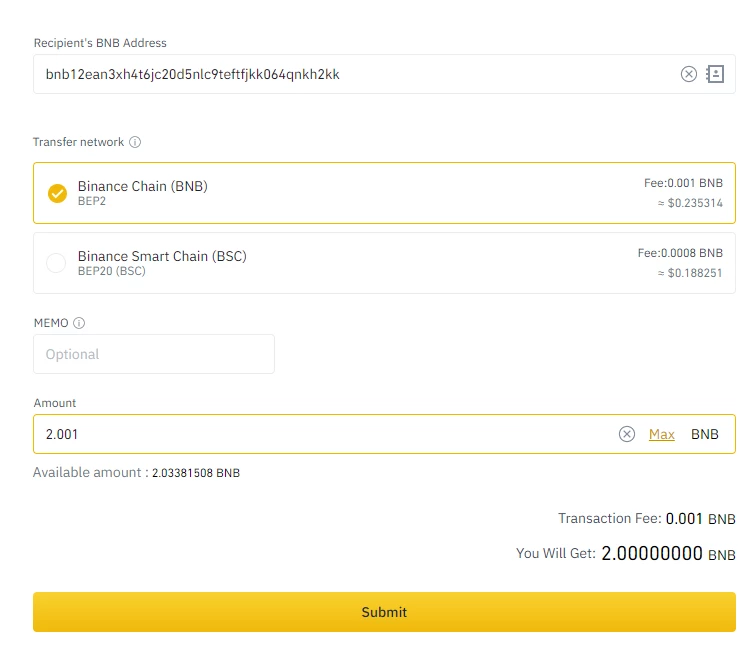
As always, keep your seed phrase secure and hidden from others. Unfortunately, the Binance Chain Wallet is not compatible with hardware wallets at this point in time, so make extra sure that you keep the seed phrase safe.
Carefully Select Your Validator Node(s)
Binance calls the BSC’s consensus model Proof of Staked Authority, which is functionally similar to the delegated Proof of Stake model used by Tron and EOS. This means that only a small number of validators will actually be able to produce blocks and earn staking rewards and the 21 nodes with the highest stake delegated to them will be selected for this job.

When you visit the Staking page on Binance.org, you will first see a list of validators, both active and inactive and you can delegate your BNB to either one or multiple of them. In order to do so, you need to click the button on the upper right corner to connect your wallet.
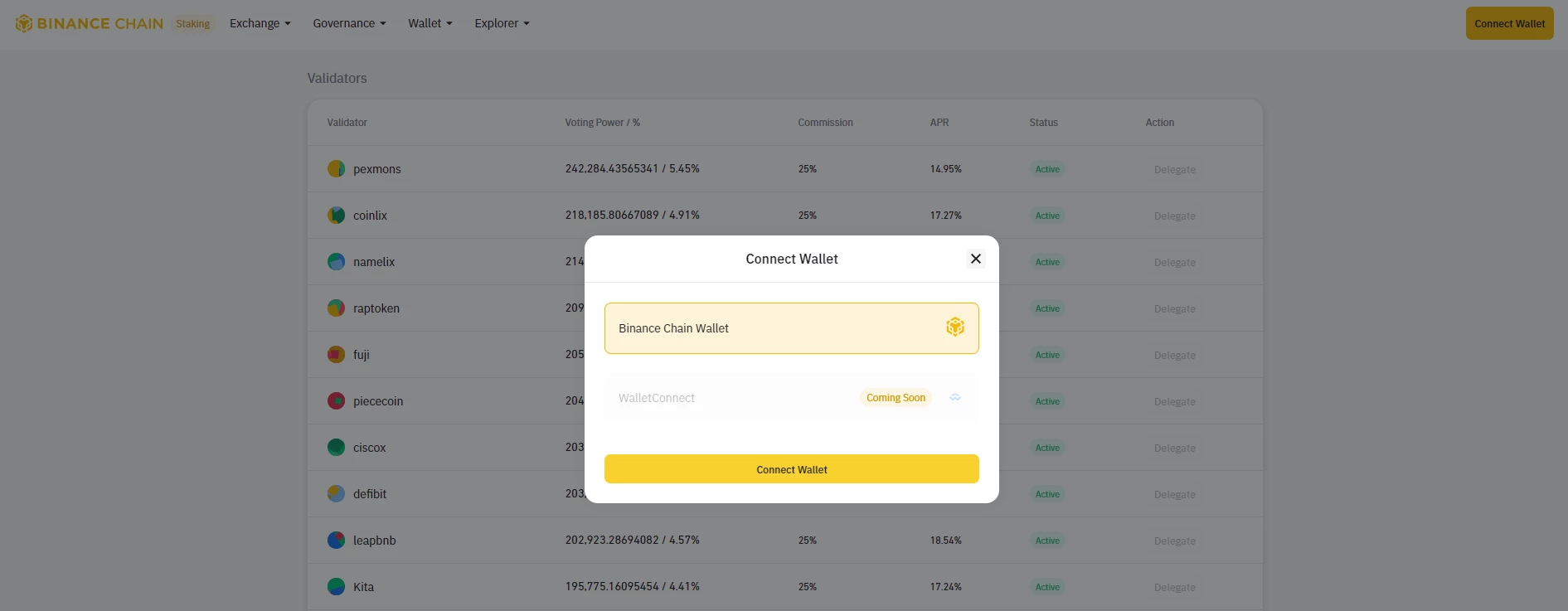
Since all validators receive the same total reward regardless of their stake, you’ll earn a higher APR if you delegate to a node that has less BNB staked to it, but a lower stake can also be a signal that the node is less trustworthy. The list shows you the total stake, APR, and the share of the rewards each of the nodes retain as commission.
In this example, we will be delegating to the freshly launched Ankr BSC Validator, since it does not charge any commission and it has a high degree of trustworthiness, being run by a reputable staking company.

Pull the Trigger
When you click on the name of one of the names, the site shows you all of the details surrounding the validator.
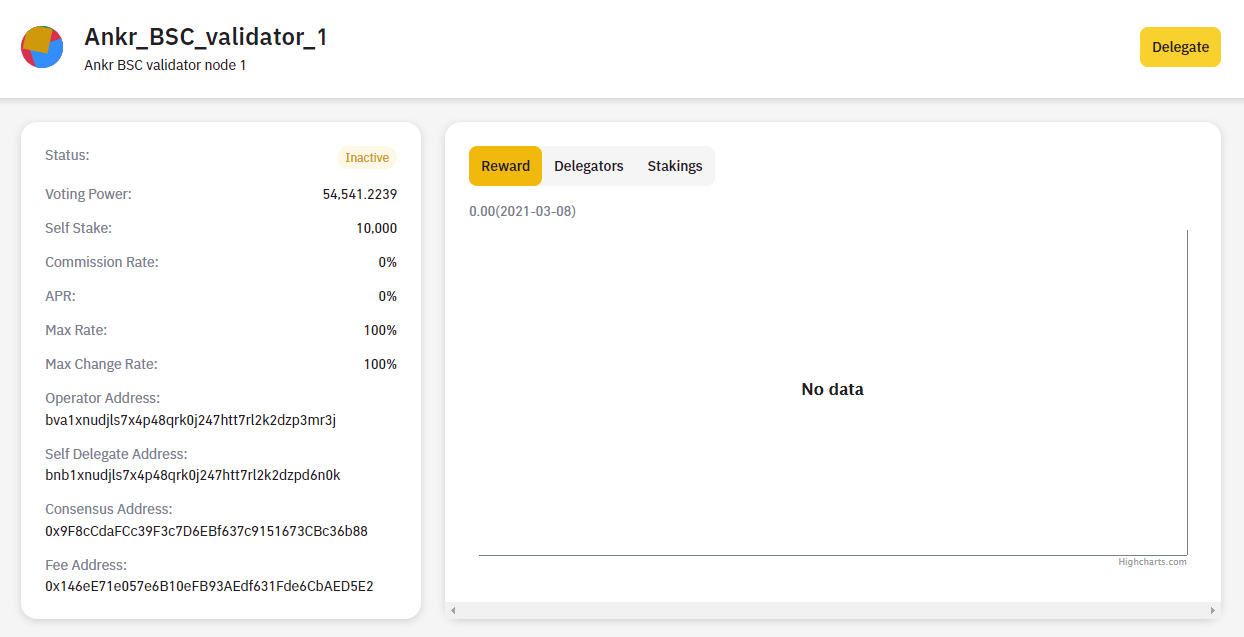
Since the Ankr validator has just been launched, there is no data for past rewards. For longer-running active validators, you would see a chart here, detailing how the APR changed over time. On the left-hand side, you can see the node’s total stake, how much the node operators contributed themselves, their current commission rate and APR, as well as the minimum and maximum rate the node, leaves to delegators.
If you agree with the terms, click Delegate in the top right corner.
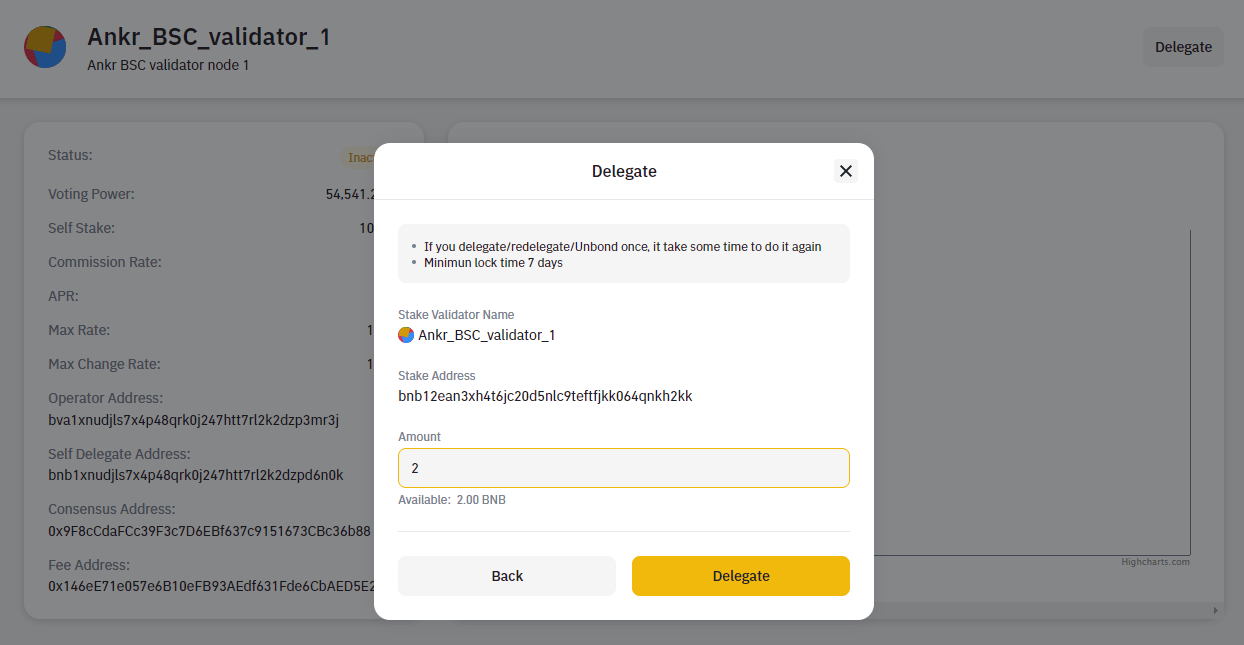
Enter the amount you want to delegate to the node and then sign the transaction in your wallet. You will need at least 1 BNB to post a valid stake.

Monitor your Investment
Once the transaction passes, you can see your stake being added to the list of delegators and staking transactions:

You can also click My Staking in the top right corner of your browser window to see an overview of all nodes that you have delegated to.
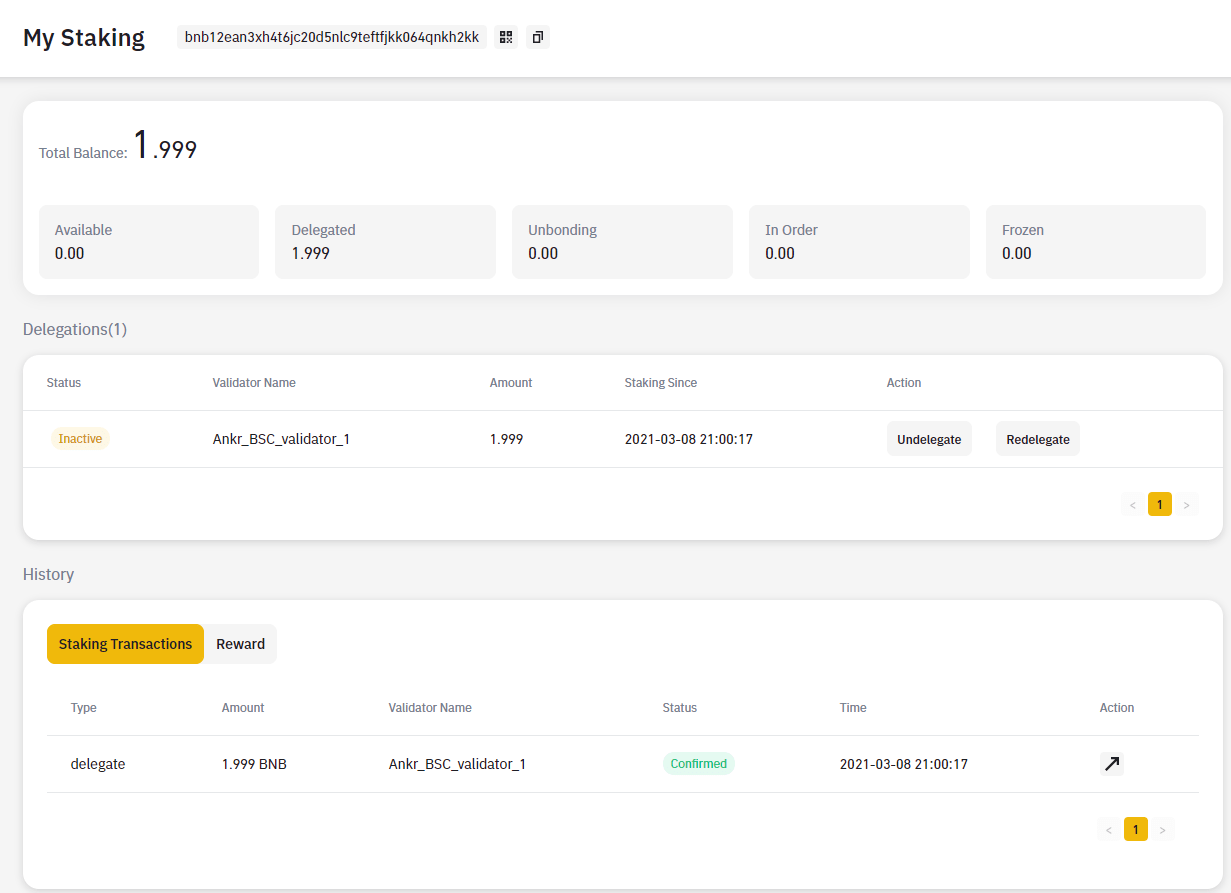
This is also where you can keep track of your staking rewards and where you can withdraw your stake or delegate it to another validator. Note that before withdrawing or redelegating, your funds will be subject to a lockup period of one week.


